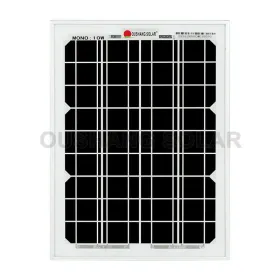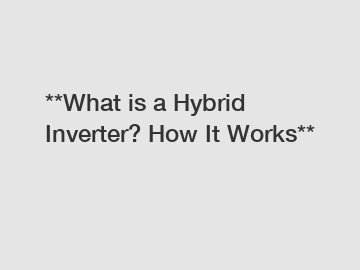The Pioneers of Solar Energy: Who Invented Solar Panels?
Solar energy has emerged as a vital and increasingly prominent source of renewable energy in our quest for sustainability and environmental consciousness. At the heart of this revolution lie solar panels, the innovative technology that converts sunlight into electricity. But who were the visionaries behind this groundbreaking invention? Let's delve into the history and explore the pioneers of solar energy who invented solar panels.
Edmond Becquerel (1839):French physicist Edmond Becquerel is credited with laying the groundwork for solar energy technology. In 1839, at just 19 years old, he discovered the photovoltaic effect while experimenting with electrolytic cells. This phenomenon, wherein certain materials generate an electric current when exposed to light, formed the basis for the development of solar cells and panels.
Charles Fritts (1883):American inventor Charles Fritts is often regarded as the father of modern photovoltaics. In 1883, he constructed the world's first true solar cell using selenium-coated plates. Although inefficient by today's standards, Fritts' invention demonstrated the feasibility of converting sunlight directly into electricity and paved the way for future advancements in solar technology.
Russell Ohl (1941):In 1941, American physicist Russell Ohl made a groundbreaking discovery while working at Bell Laboratories. He observed that the junction between different types of semiconductor materials created a photovoltaic effect, leading to the development of the first silicon solar cell. Ohl's invention marked a significant milestone in the evolution of solar panels and laid the foundation for modern solar photovoltaic systems.
Related links:
Are lightweight solar panels any good?
Can a small solar panel power a TV?
What Is Half-Cut Solar Cell Technology?
Are Solar Attic Fans Effective?
Longi Plans World's Largest Solar Factory for $6.7 Billion
How To Choose The Right Solar Panels For Home & ...
The Ultimate Buyer's Guide for Purchasing stackable lithium ion batteryGerald Pearson, Calvin Fuller, and Daryl Chapin (1954):A pivotal moment in the history of solar energy occurred in 1954 when Bell Laboratories researchers Gerald Pearson, Calvin Fuller, and Daryl Chapin invented the first practical silicon solar cell. Their groundbreaking creation achieved an efficiency of around 6%, making it suitable for commercial applications. This seminal invention revolutionized the solar industry and paved the way for the widespread adoption of solar panels.
Zhores Alferov, Herbert Kroemer, and Jack Kilby (1950s-1960s):In the 1950s and 1960s, researchers such as Zhores Alferov, Herbert Kroemer, and Jack Kilby made significant contributions to the development of semiconductor technology, including advancements in solar cells. Their work in semiconductor physics and materials science played a crucial role in improving the efficiency, reliability, and cost-effectiveness of solar panels.
These visionary scientists and inventors, along with countless others who followed in their footsteps, have revolutionized the field of solar energy and paved the way for the widespread adoption of renewable energy sources. Today, their pioneering work continues to inspire innovation and drive the transition towards a sustainable and clean energy future.
Part 2: What are the advantages of lithium-ion batteries and ...
BIPV Solar Panel Manufacturer: Roof Integrated Solar Panels
Is it cheaper to build your own battery pack?
The Benefits of Using Diaphragm Pump Instead of Not Pumping
How to troubleshoot air operated diaphragm pump?
Revolutionize your pumping game with diaphragm pumps?
How to Choose Types of Piston Positive Displacement Pumps for Food












